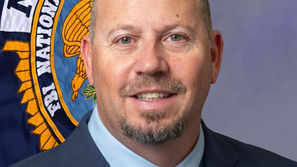Chowchilla talks of future
- John Rieping
- Dec 22, 2018
- 3 min read

John Rieping/The Madera Tribune Chowchilla City Councilman Ray Barragan and City Administrator Brian Haddix affirm each other during a town hall meeting.
A small gathering of Chowchilla residents discussed future public safety and development needs with city officials at a town hall meeting this week.
In November, city voters approved setting a one percent tax for eight years to fund public safety services (Measure N). A survey of residents before the election found nearly all were concerned about drug enforcement and emergency response services, according to City Administrator Brian Haddix, who led the meeting. Police, fire protection, safe routes to school, violent crimes, and neighborhood patrols were other common priorities.
One audience member pointed out that, right now, the fire department serves as first responder, even for medical emergencies, and “we’re mostly volunteers.” He wanted to see funding for Paid Call Firefighters, who are paid at an hourly rate for each call to which they respond.
City staff replied that some fire staffing would be looked at around the eighth year of the sales tax. The city’s plan for how Measure N funds would be spent is a rough estimate, he said, but actual spending would be allocated on a year-to-year basis. The oversight committee would recommend expenditures to the city, and at times some unspent funds may rollover to the following year.
Haddix predicted another recession within a few years and said he was grateful the Measure N funds would be available to safeguard local services and avoid cuts that other cities may be forced to make.
A town hall attendee asked when the city’s approved downtown plan would be implemented. City staff replied that it would depend on a combination of funding — likely grant, transportation, and developer money — to make it happen, and it may be a five to seven year timeline before work begins. Planning and design guidelines need to be in place, he said, to qualify for such funds, so the first step may be a grant to allow for the creation of a master plan.
A plan grant would also allow the city to identify deficiencies that Caltrans, the state’s transportation department, would need to help address.
State Route 233 cuts through downtown Chowchilla as Robertson Boulevard, and enables drivers to go from eastbound SR 152 to northbound SR 99. Because Caltrans maintains the boulevard, the city has to negotiate with it for any changes to the highway, even to put up a Christmas tree.
Haddix said the city hopes to gain control and responsibility for Robertson Boulevard in stages. By doing so, he said the city council is seeking a balance between controlling the destiny of downtown and having to maintain a neglected boulevard. “The idea is that after 10 years (of a gradual takeover) you’ve brought it into shape … (and) it becomes part of city management,” he explained.
Getting landowners to help with downtown has also been a struggle in years past, said Mayor John Chavez. “We even offered money” through the Redevelopment Agency, he said. Even so, “it was hard get people downtown to still do improvements. We had $1,500 matching grants to do the facades of all the buildings downtown, and not one person took advantage of it.”
Attendees at Tuesday night’s town hall meeting praised the installation in east Chowchilla of a 750,000 gallon water storage tank that is expected to be ready for use in February. When connections are complete, the tank will be filled at night when electricity rates are lower, and then water drawn from it as needed during the day. A second 750,000 gallon tank will be installed in the spring, and should be operational by September.
The next meeting of the Chowchilla City Council will be 7 p.m. Jan. 8, 2019, in City Hall, 130 S. Second St.


























Comments